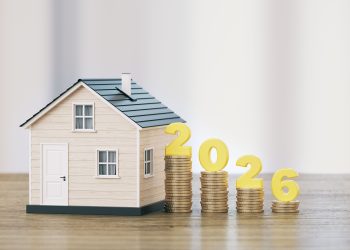 RISMEDIA, May 16, 2011—Price declines will end and average U.S. home prices will stabilize by Labor Day. Prices in even the hardest-hit markets will level out by the end of 2012.
RISMEDIA, May 16, 2011—Price declines will end and average U.S. home prices will stabilize by Labor Day. Prices in even the hardest-hit markets will level out by the end of 2012.
That’s the latest prediction from the authoritative Moody’s Analytics and Fiserv, Inc, after an analysis of home price trends in 375 markets tracked by the Fiserv Case-Schiller Indexes.
Fiserv reports that home prices have fallen so far that they are at pre-bubble levels, creating affordable housing relative to income which, coupled with a slowly improving economy, will finally end price declines.
The slide in home prices has greatly improved home affordability. Relative to household income, affordability is at or close to pre-bubble levels in nearly every metro area across the U.S. This dynamic, combined with growing economic strength, leads Fiserv and Moody’s Analytics to project that average U.S. home prices will stabilize in the third quarter of this year. By the end of 2012, home prices in even the hardest-hit housing markets will level out.
However, while Fiserv and Moody’s project the national U.S. home price average will stabilize in the third quarter of 2011, a 3 percent decline is expected in the first half of this year.
“The first step toward restoring confidence in housing markets is an improvement in consumer sentiment, which we expect will increase slowly through 2011 due to stronger job gains and a falling unemployment rate,” says David Stiff, chief economist, Fiserv. “As confidence rises, the decline in home sales that started in 2006 will, finally, come to an end.”
Even as balance returns to the housing market, Fiserv Case-Shiller data forecasts the pace of recovery will be uneven across U.S. metro areas.
“Many metro areas have vast inventories of vacant homes, a consequence of both over-building during the bubble and high rates of foreclosure,” says Stiff. “New data from the 2010 U.S. Census provide estimates of the depth of the overhang of vacant homes in some markets. Between the 2000 and 2010 Censuses, the overall U.S. housing vacancy rate increased by 2.4 percentage points. In metro areas with the largest price bubbles and crashes, housing vacancy rates have jumped by 3 to 7 percentage points.”
The most stressed U.S. housing markets are characterized by unemployment rates that exceed the national average and high housing vacancy rates. Examples include Detroit, Las Vegas and Orlando, where unemployment tops 10 percent and vacancy rates are above 15 percent. Stiff noted the feedback loop that continues to exert downward pressure on home prices in these markets:
“Economic growth in these markets was highly dependent on residential real estate from 2002 to 2006, with many new jobs tied directly or indirectly to booming housing markets. When the bubble popped, these markets suffered the largest job losses. Rapidly falling employment undercut housing demand, causing home price depreciation to accelerate, leading to more job losses in residential real estate.”
The markets that escaped this dynamic are better positioned for more robust recoveries. Examples include Dallas, Milwaukee, Houston, New York, Baltimore and Pittsburgh. Stiff notes that while many of these metro areas did experience double-digit home price declines, their economic growth was more balanced during the boom years, relying less on residential construction. Today, these markets benefit from relatively lower housing vacancy and unemployment rates.










